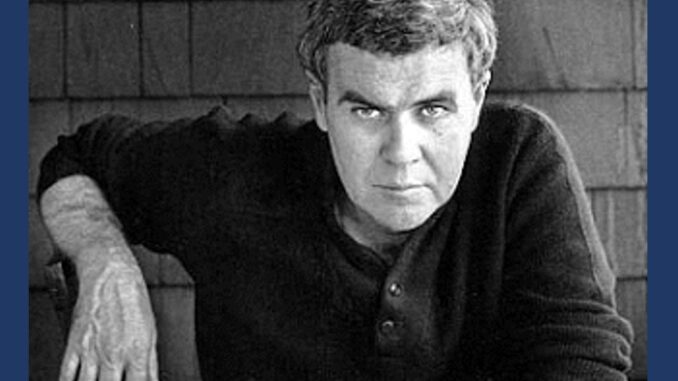
 When our editor expressed a fondness for Raymond Carver some time ago, I added him to my list of subjects for investigation. Interviewing Willy Vlautin earlier this year his name came up just as I’d started reading some of his stories. I was also thinking about Joe Pug as my contribution to the “More People Really Should Know About…” strand and Carver appeared as an influence on his ‘The Great Despiser’ album then action was clearly required.
When our editor expressed a fondness for Raymond Carver some time ago, I added him to my list of subjects for investigation. Interviewing Willy Vlautin earlier this year his name came up just as I’d started reading some of his stories. I was also thinking about Joe Pug as my contribution to the “More People Really Should Know About…” strand and Carver appeared as an influence on his ‘The Great Despiser’ album then action was clearly required.
So, this is a guide to where my, admittedly brief, acquaintance with his work has led me, and a guide to where I’m going next in reading his stories. It’s a work in progress, but if you’ve followed our pieces on Cormac McCarthy and Willy Vlautin then Carver is clearly the next person to try.
Raymond Carver was the master of minimalist fiction. He captured the essence of everyday American life with clarity. His stories, often set in the working-class towns of the Pacific Northwest, delve into the lives of ordinary individuals grappling with unemployment, alcoholism, failing marriages, and the general disillusionment of the late 20th century. He has the same sense of place that Willy Vlautin does so well. In fact, two of my favourite Delines songs ‘Little Earl’ and the title song of ‘The Imperial’ could be Carver stories. Vlautin told the ‘Famous Writing Routines’ blog: “Carver made a lot of sense to me as a kid stylistically but most importantly because so many of his stories were about alcoholic men carried by women. Those were stories I knew and before reading Carver, I didn’t know you could write stories like that. Stories of people circling the drain in a very working-class undramatic yet dramatic way. His books gave me permission to tell the stories I could tell.”
Carver’s writing is stark and unadorned, mirroring the often-bleak reality his characters inhabit. He avoids complex descriptions and literary flourishes, relying instead on simple, direct language to convey profound emotional depth. This minimalist approach, influenced by Ernest Hemingway and Chekhov, allows us to connect with the characters and their struggles.
So far, my studies on Good Reads and elsewhere have led me to this reading list
What We Talk About When We Talk About Love (1981) – This collection is often regarded as Carver’s breakout work, exploring the complexities of love through various narratives. The stories delve into the struggles, desires, and failures of everyday people, presenting love in its many forms—both healing and destructive.
Cathedral (1983) – Generally considered Carver’s masterpiece, this collection features twelve stories that examine human relationships and the challenges of communication. “The title story, ‘Cathedral,‘ is particularly noted for its profound insights into perception and connection”. This is my current Carver reading.
Where I’m Calling From: New and Selected Stories (1988) – Released just before Carver’s death, this definitive collection includes many of his best-known stories along with previously unpublished works. According to Publisher’s Weekly, “it serves as a comprehensive overview of his literary contributions.”
Will You Please Be Quiet, Please? (1976) – This was Carver’s first proper collection and contains stories that address themes of infidelity, alienation, and the mundane aspects of life. A blogger describes it as “an excellent introduction to his writing style and thematic concerns”.
So that’s my reading list sorted out for the rest of the year. Once you pick up Carver’s stories, they become hard to move beyond. Another writer whose work and purpose became clear when he quit drinking, I’ve found that if I just want to switch off and drift into a book then Carver is a great place to go.
Joe Pug’s ‘Those Thankless Years’ is Carver in song form
As is this…



Thanks for this. Carver is my favourite short story writer, and his influence is so clear to see in the “story songs” of Willy Vlautin, Rod Picott and others. What wasn’t mentioned here, being in a different art form, is Nashville director Robert Altman’s great movie Short Cuts, which weaves together several of Carver’s stories in a montage. And stars, amongst others, Tom Waits!
The Australian film, Jindabyne, is also based on the Carver story, So Much Water So Close To Home (this tale features in Short Cuts too), and for this, Paul Kelly contributed to the score. Kelly also titled his 1989 album So Much Water… and, on that, the track “Everything’s Turning to White”, retells Carver’s deeply affecting short story in song.
So many Americana threads connect to Raymond Carver. Like Tim, I urge AUK folk to dive into his world. The collection Where I’m Calling From is a good place to start and the films inspired by his work are small treasures.
Carver’s my favourite too. His stories are perfectly constructed wee nuggets of Americana. I didn’t know about the films Fiona mentions but will definitely hunt them down. Once you’ve finished the Carver books Tim I’m sure you’d enjoy Charles Bukowski too. Post Office or Ham on Rye would be a good place to start there. Have a great weekend.